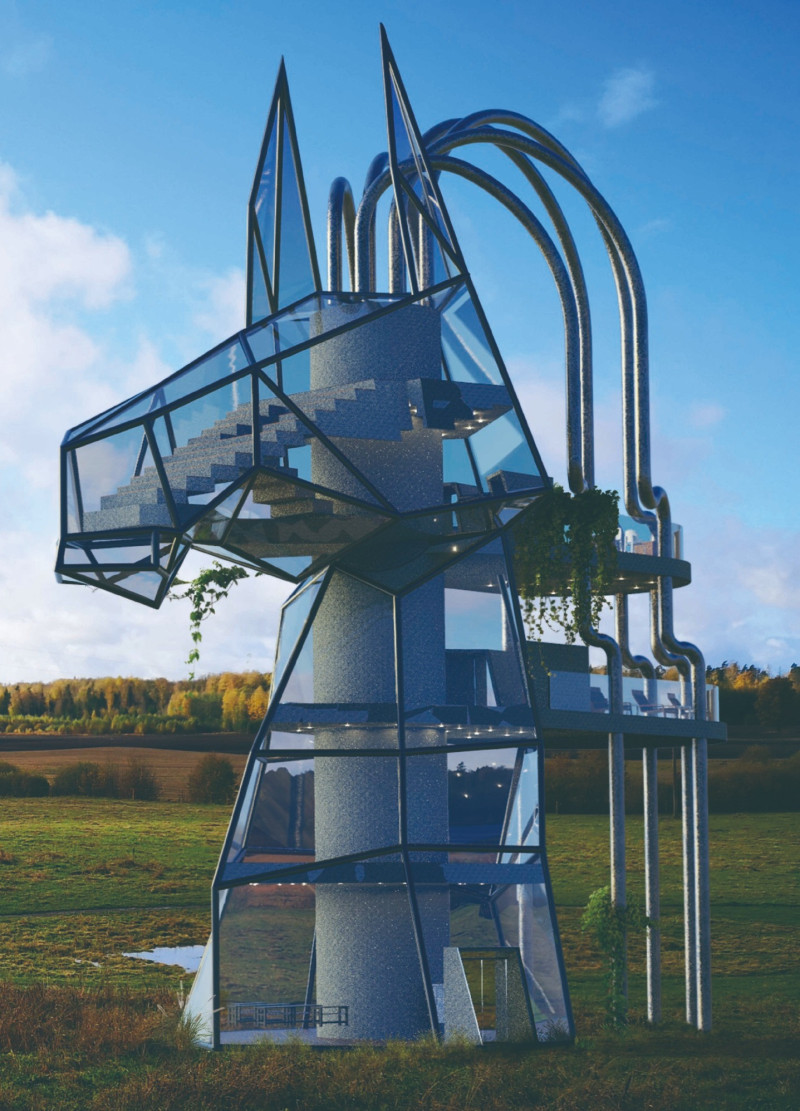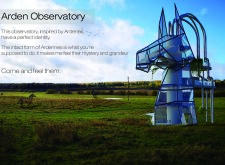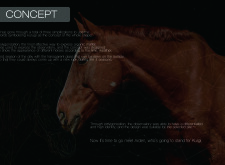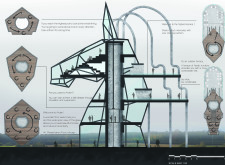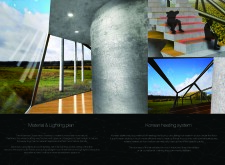5 key facts about this project
The observatory is characterized by its distinctive form, which abstractly references the head of a horse. This design approach incorporates elements that resonate with local heritage while offering a modern aesthetic. The structure invites visitors to engage with the surrounding landscape and provides a platform for observing both celestial events and the natural environment.
Material Selection and Building Composition
The observatory employs a diverse range of materials that complement its design intent and functionality. Key materials include glass, concrete, wood, and steel. The extensive use of glass maximizes natural light and reinforces the connection between the interior and the exterior landscape, allowing users to immerse themselves in their surroundings. Concrete, forming the structural framework, ensures durability, while wood flooring adds warmth and comfort to the interior experience. Steel support elements allow for expansive glazing, facilitating the unique architectural expression.
The observatory features multiple levels, each designed to provide varied perspectives. An integrated staircase not only acts as a functional element but also serves as a social space for visitors to interact and gather. Outdoor terraces are strategically placed to enhance the viewing experience, encouraging users to engage with the natural scenery.
Innovative Design Features
What sets the Arden Observatory apart is its seasonal adaptability and integration with the local environment. The design utilizes transparent materials, making it responsive to changing light conditions, and cultivating an evolving visual character throughout the seasons. This capability ensures that the structure remains dynamic and engaging, fostering curiosity and exploration.
The design incorporates sustainable features such as energy-efficient lighting and a traditional ondol heating system. These elements contribute to the building's environmental responsibility, reducing its ecological footprint while enhancing user comfort.
Moreover, the observatory's layout promotes interaction with nature, inviting visitors not only for astronomical observation but also for contemplation of the surrounding natural beauty. The architectural choices emphasize mindfulness and connection, encouraging users to engage with both the built environment and the landscape beyond.
For those interested in more details about the Arden Observatory, including architectural plans, architectural sections, and innovative architectural designs, exploring the project presentation will provide valuable insights into its thoughtful design approach and unique characteristics.


